What is the latest successive approximation A/D converter that contributes to circuit simplification and high precision?
High precision A/D converters are used in a wide range of applications, including instrumentation, industrial equipment such as automatic test equipment (ATE) and factory automation (FA), and medical equipment.
Until now, when selecting a high-precision A/D converter, the typical choice was a Sigma-Delta type when high resolution was required, and a SAR (Successive-approximation Register) type when speed was required.
However, Analog Devices' successive approximation A/D converters have continued to improve, and now offer products with resolutions of 20 bits or more, which is comparable to sigma-delta types. In addition to high accuracy, there are also modular SiP (system in package) products that reduce the number of peripheral components and incorporate peripheral components.
Here, we will introduce three product series of Analog Devices' latest successive approximation A/D converters, which achieve circuit simplification and high accuracy.
・The AD4000 series has a resolution of 20 bits or more and functions that help simplify circuits.
・LTC2378 series with 20-bit or higher resolution and high integral linearity
・The modular ADAQ series minimizes development costs and mounting area for high-precision circuits
AD4000 series and LTC2378 series with resolution of 20 bits or more
Analog Devices has two lineups of successive approximation A/D converters with resolutions of 20 bits or more.
The AD4000 series has many ease-of-use features that contribute to circuit simplification, while the LTC2378 series is ideal for circuits that require high integral nonlinearity (INL) and high precision.

The AD4000 Series Simplifies Your Signal Chain
Developed through a collection of Analog Devices technologies, the AD4000 series provides useful features to solve the system-level challenges of precision data acquisition, allowing designers to simplify the signal chain and reduce power consumption while achieving high channel density.
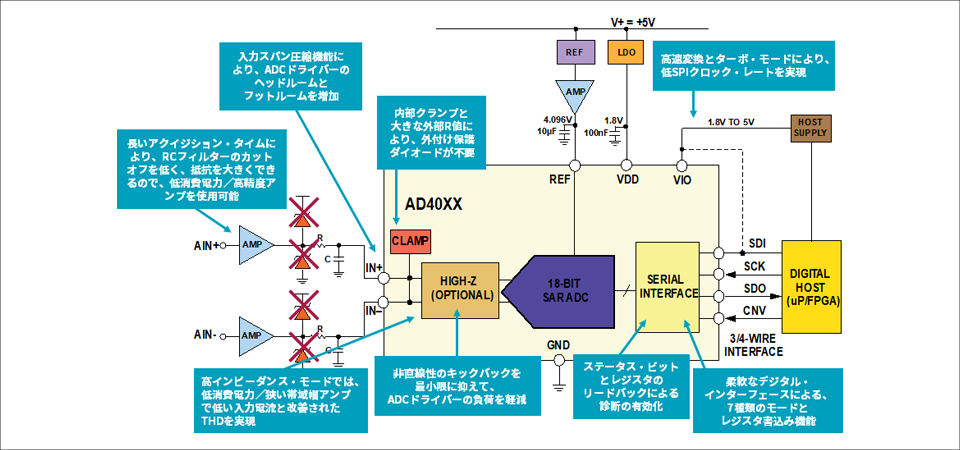
■ Internal overvoltage clamp function that eliminates the need for external protection diodes
In applications where the ADC driver rail is above the reference voltage and below ground, the output may exceed the ADC's input voltage. The AD4000's internal overvoltage clamp circuit prevents excessive current from flowing into the REF pin, preventing overvoltage corruption of the reference voltage and protecting the reference source. Clamps protect the ADC inputs from DC overvoltages, eliminating the need for external protection diodes that can introduce measurement errors. This is especially important when the reference is shared by multiple ADCs.
■ High-impedance mode that eliminates the need for an ADC driver circuit
High-Z mode reduces the voltage step due to the nonlinear input current during ADC conversion, thus improving system performance when a low power or narrow bandwidth signal source is used to directly drive the ADC input. High-Z mode, combined with a long acquisition phase, allows precision amplifiers or signal conditioning stages to drive the AD4000 series directly, eliminating the need for a dedicated high speed ADC driver stage typically used in designs based on successive approximation ADCs when the negative input signal frequency is low (<10kHz), and allows the input RC filter cutoff frequency to be set lower than that of conventional ADCs. This helps to eliminate wideband noise from upstream signal chain components. It also allows the RC filter to have a larger R value, broadening the selection of low power, high bandwidth precision amplifiers that can be used with DC type signals.
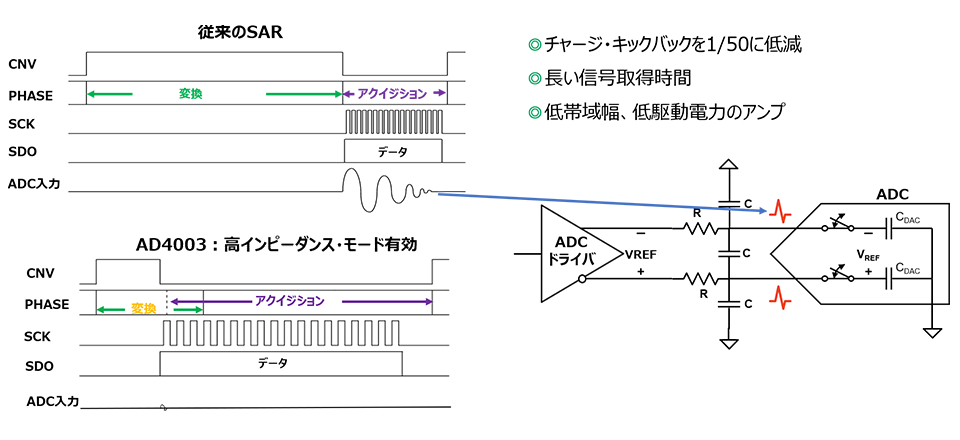
■ Input span compression function that simplifies power supply voltage
In power-critical applications, system designers may connect the negative supply rail of the ADC driver to ground and use a voltage on the positive supply rail close to the reference voltage. The Input Span Compression feature modifies the A/D converter transfer function to reduce the upper and lower input voltage range limits (-FS and +FS) of the A/D converter by 10% while still allowing all available 2N outputs. Maintain access to your code. For example, with span compression enabled with a typical reference voltage of 4.096V, the full-scale input range is set from 0.41V to 3.69V, providing enough power to power the drive amplifier and reference source from a single 5V supply. Ample headroom is provided.
■ Turbo mode shortens settling time
Turbo mode allows the previous conversion result to start clocking out before the A/D converter has finished converting. The fast conversion times of the AD4000 series also extend the acquisition window, which reduces the settling time burden on the ADC driver. The combination of fast conversion times and turbo mode allows reading at lower SPI clock rates, easing interface requirements such as isolation solutions. This opens up a wider range of processor options, including delay requirements for digital isolators, low-end processors or FPGAs, and low power microcontrollers with relatively low serial clock rates.
High Integral Nonlinearity (INL) Performance of the LTC2378 Series
The LTC2378 series offers high performance where strict linearity is a critical requirement.
For the same 20-bit A/D converter, the LTC2378-20 has a maximum INL of ±2 ppm from -40 to 85°C, and the AD4020 has a maximum INL of ±3.1 ppm from -40 to 125°C (with a maximum INL of ±2 ppm from 0 to 70°C). ) and the LT2378 series have higher integral nonlinearity.
*Because the measurement conditions are different for both graphs, please check the data sheet of each product for details.
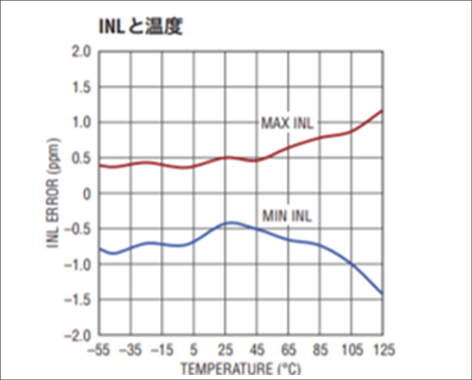
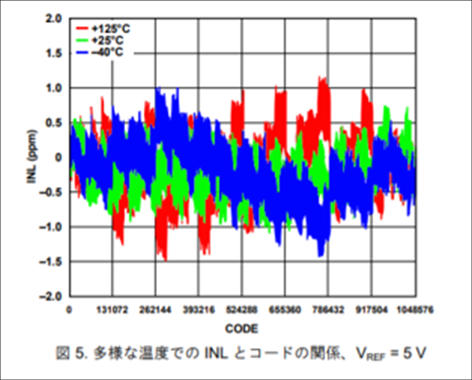
We help you select the best A/D converter
As mentioned above, the LTC2378-20 has better integral nonlinearity (INL), but the AD4020 has a faster throughput of 1.8 MSPS compared to 1 MSPS of the LTC2378-20, allowing it to capture high frequency signals up to the Nyquist frequency with high SINAD performance, allowing the measurement of small signal levels using decimation/oversampling, multiplexing, and reducing the issues of anti-aliasing filters.
Also, the AD4020's short conversion time and long acquisition window allow the use of lower SPI clock rates. This is almost double (625ns vs 312ns) compared to the LTC2378-20. This greatly reduces the settling load on the ADC driver circuitry, opening up ADC driver options to the use of low power, narrow bandwidth precision amplifiers and digital hosts. Additionally, the RC filter cutoff frequency can be set based on the applicable bandwidth, regardless of the required settling time, allowing more flexibility in RC filter selection while maximizing the performance of the chosen amplifier. Become.
As there are many factors to consider when selecting a high-precision A/D converter, if you are having trouble selecting a part, please feel free to contact us using the contact button. Our technical specialists will propose the best part to meet your specifications.
ADAQ series that meets the challenge of inheriting analog technology
The ADAQ Series is a System-in-Package (SiP) solution that minimizes footprint and accelerates time to prototype for existing signal chains. Analog Devices' patented µModule® and iPassives® technologies integrate common signal blocks and critical passive components on a single device.
By adopting the ADAQ Series,the development cycle can be simplified by shifting the work of component selection, optimization, and layout, which was previously performed by experienced analog circuit designers, from the designer to the device itself. This is another approach by Analog Devices to simplify analog circuits and improve their accuracy, and it is also a solution to address the issue of the decline in analog circuit designers in a declining population society and the issue of analog technology succession.
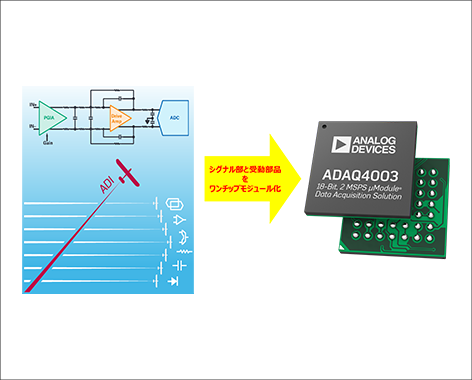
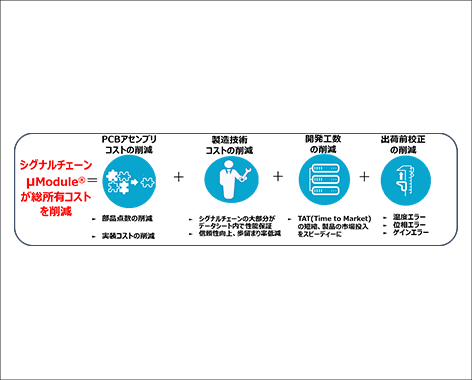
Passive components built into the ADAQ series with iPassives® technology
It helps to address circuit imbalance, reduce parasitics, achieve gain matching, and optimize and guarantee the drift performance of the device. It also has size advantages as well as performance when compared to discrete passive components, minimizing temperature-dependent error sources and easing the burden of system-level calibration.
■ Unipolar RC filter between ADC driver and ADC
Maximum performance in terms of settling time and input signal bandwidth.
■ Voltage reference node and any decoupling capacitors required for the power supply
Helps reduce the number of components in your bill of materials (BOM).
■ Reference buffer set to unity gain
Since the reference source will be driving a high impedance node rather than the dynamic load of the SAR capacitor array, it provides a much lower power reference source than many successive approximation A/D converters. can be implemented. This allows flexibility in choosing the input voltage of the reference buffer to match the desired analog input range.
■ All necessary decoupling ceramic capacitors for reference and power supply
These capacitors handle transient currents by providing a low impedance path to ground at high frequencies. Therefore, no external decoupling capacitors are required and their absence does not impact performance or introduce EMI issues.
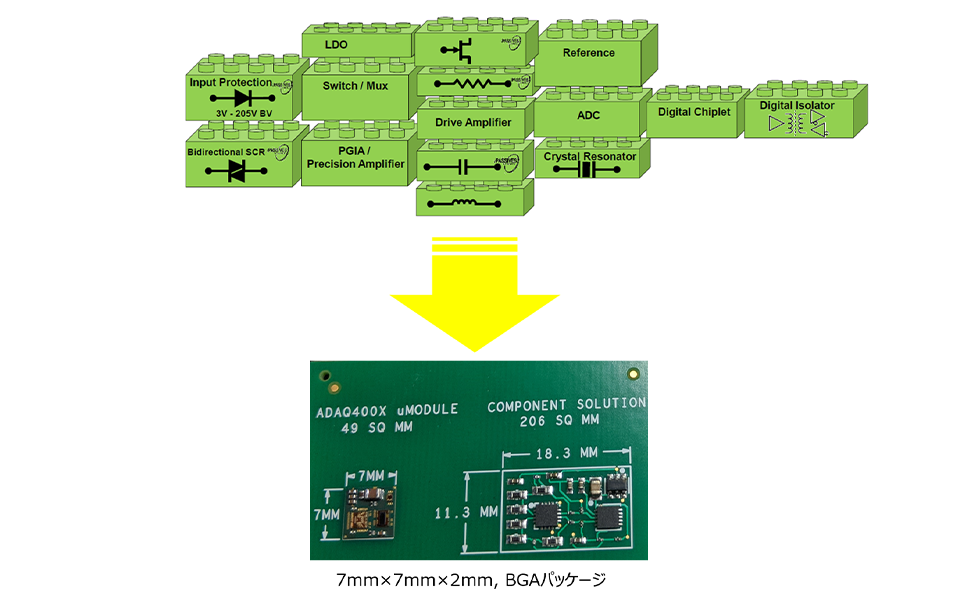
Application example
►Measuring instruments (tabletop and portable)
Ultrasonic non-destructive tester
dynamic signal analysis
analog input module
Emission analyzer
►ATE
-Power supply for DUT
-Signal source measurement unit
-pin card digitizer
►Healthcare
- Ultrasound (Continuous Wave Doppler Path)
-Clinical monitoring
- Digital X-ray
-endoscopy
►Industrial automation
-machine automation
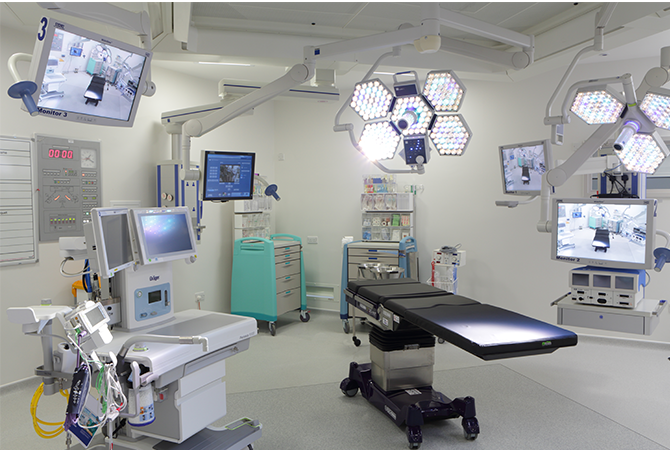

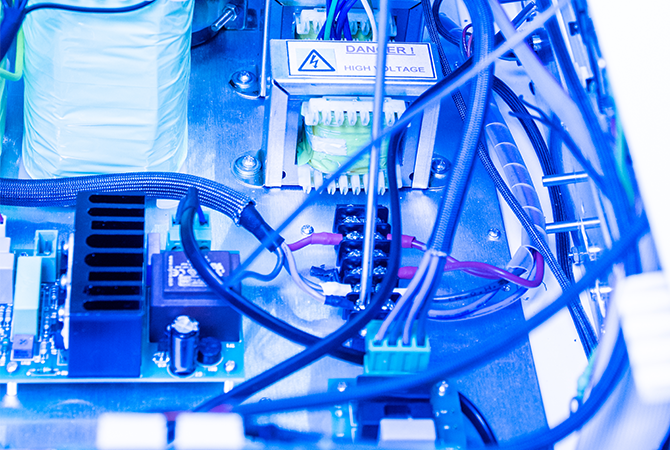

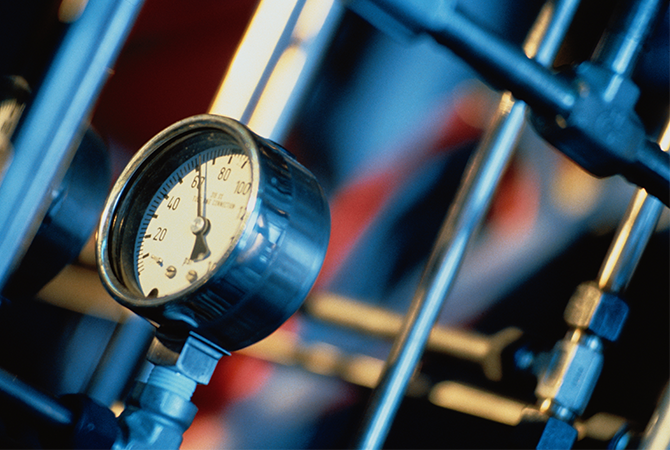

Click here for recommended articles/materials
Click here to purchase products
Click here for the manufacturer's site
Inquiry
If you have any questions about this product or consultation on parts selection, please feel free to contact us from the following.
Analog Devices Manufacturer Information Top
If you want to return to Analog Devices Manufacturer Information Top, please click the button below.
